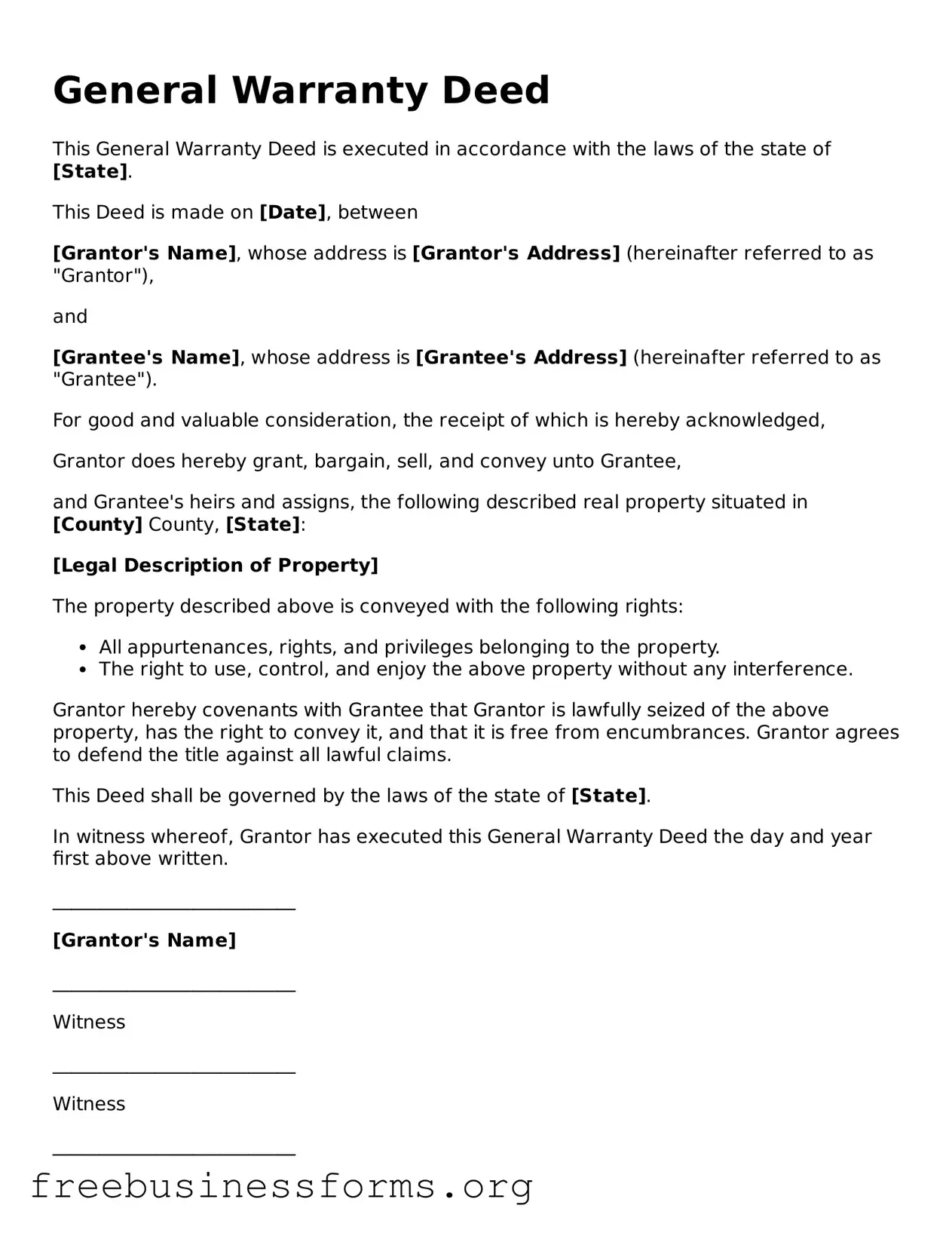General Warranty Deed
This General Warranty Deed is executed in accordance with the laws of the state of [State].
This Deed is made on [Date], between
[Grantor's Name], whose address is [Grantor's Address] (hereinafter referred to as "Grantor"),
and
[Grantee's Name], whose address is [Grantee's Address] (hereinafter referred to as "Grantee").
For good and valuable consideration, the receipt of which is hereby acknowledged,
Grantor does hereby grant, bargain, sell, and convey unto Grantee,
and Grantee's heirs and assigns, the following described real property situated in [County] County, [State]:
[Legal Description of Property]
The property described above is conveyed with the following rights:
- All appurtenances, rights, and privileges belonging to the property.
- The right to use, control, and enjoy the above property without any interference.
Grantor hereby covenants with Grantee that Grantor is lawfully seized of the above property, has the right to convey it, and that it is free from encumbrances. Grantor agrees to defend the title against all lawful claims.
This Deed shall be governed by the laws of the state of [State].
In witness whereof, Grantor has executed this General Warranty Deed the day and year first above written.
__________________________
[Grantor's Name]
__________________________
Witness
__________________________
Witness
__________________________
[Notary Public Name]
